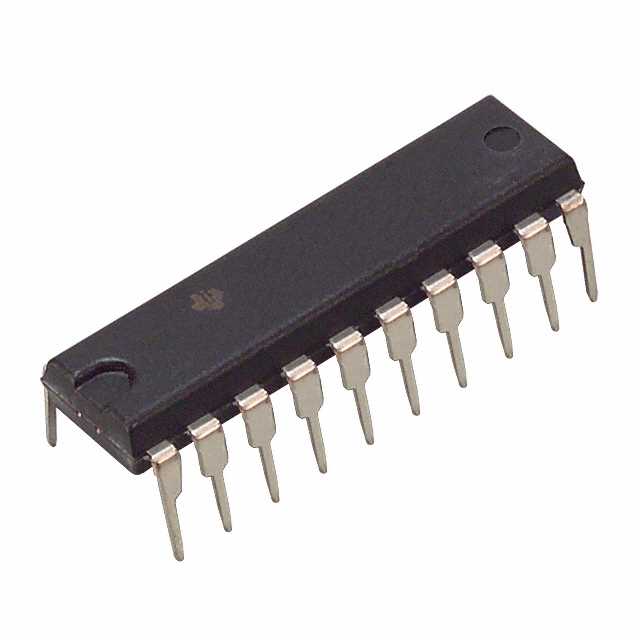

Texas Instruments
UC2855BN
Power Factor Correction ICs




.png?x-oss-process=image/format,webp/resize,p_30)


UC2855BN Description
UC2855BN Description
The UC2855BN is a high-performance power factor correction (PFC) controller IC designed by Texas Instruments. This device is specifically engineered to provide average current mode control for power factor correction in a wide range of power supply applications. The UC2855BN operates with a switching frequency of 500 kHz and is designed to work within a supply voltage range of 10.5V to 20V. It features a through-hole mounting type, making it suitable for applications requiring robust mechanical stability and ease of installation.
The UC2855BN is housed in a tube package, ensuring reliable handling and storage. It has a startup current of 150 µA, which is crucial for efficient power management during the initial power-up phase. The device is compliant with the REACH regulation, indicating that it is free from substances of very high concern, and it adheres to the ROHS3 standard, ensuring it is free from hazardous substances. The HTSUS code for this product is 8542.39.0001, which is important for customs and tariff purposes.
UC2855BN Features
- Average Current Mode Control: The UC2855BN employs average current mode control, which provides precise control over the input current, ensuring high power factor and low total harmonic distortion (THD). This mode of operation is particularly advantageous in applications requiring high efficiency and power quality.
- Wide Supply Voltage Range: With a supply voltage range of 10.5V to 20V, the UC2855BN is versatile and can be used in various power supply designs without the need for additional voltage regulation circuits.
- High Switching Frequency: The 500 kHz switching frequency allows for the use of smaller inductors and capacitors in the power supply design, reducing the overall size and cost of the system.
- Low Startup Current: The 150 µA startup current ensures that the device consumes minimal power during the initial power-up phase, contributing to overall system efficiency.
- Compliance and Reliability: The UC2855BN is REACH unaffected and ROHS3 compliant, ensuring that it meets the highest environmental and safety standards. The through-hole mounting type and tube packaging further enhance its reliability and ease of integration into various applications.
UC2855BN Applications
The UC2855BN is ideal for a variety of power management applications, particularly those requiring high efficiency and power factor correction. Some specific use cases include:
- AC-DC Power Supplies: The UC2855BN is well-suited for use in AC-DC power supplies where high power factor and low THD are critical. Its average current mode control ensures that the input current waveform closely follows the input voltage waveform, resulting in a high power factor.
- Uninterruptible Power Supplies (UPS): In UPS systems, the UC2855BN can help maintain a stable and efficient power supply, ensuring reliable operation during power outages and voltage fluctuations.
- Telecommunications Equipment: The device's robust design and compliance with environmental regulations make it suitable for use in telecommunications equipment, where reliability and efficiency are paramount.
- Industrial Power Supplies: The UC2855BN's wide supply voltage range and high switching frequency make it ideal for industrial power supplies that require precise control and high efficiency.
Conclusion of UC2855BN
The UC2855BN from Texas Instruments is a highly efficient and reliable PFC controller IC designed for a wide range of power management applications. Its average current mode control, wide supply voltage range, and high switching frequency make it an excellent choice for applications requiring high power factor and low THD. The device's compliance with REACH and ROHS3 standards, along with its through-hole mounting type and tube packaging, ensure that it is both environmentally friendly and mechanically robust. The UC2855BN is ideal for use in AC-DC power supplies, UPS systems, telecommunications equipment, and industrial power supplies, where its unique features and advantages provide significant benefits over similar models.
Tech Specifications
UC2855BN Documents
Download datasheets and manufacturer documentation for UC2855BN
 Mutl Dev Assembly Site Add 16/Oct/2018
Mutl Dev Assembly Site Add 16/Oct/2018  UC2855ADWTR
UC2855ADWTR  EOL 21/Sept/2023
EOL 21/Sept/2023  UC2855ADWTR
UC2855ADWTR Shopping Guide



























.png?x-oss-process=image/format,webp/resize,h_32)










